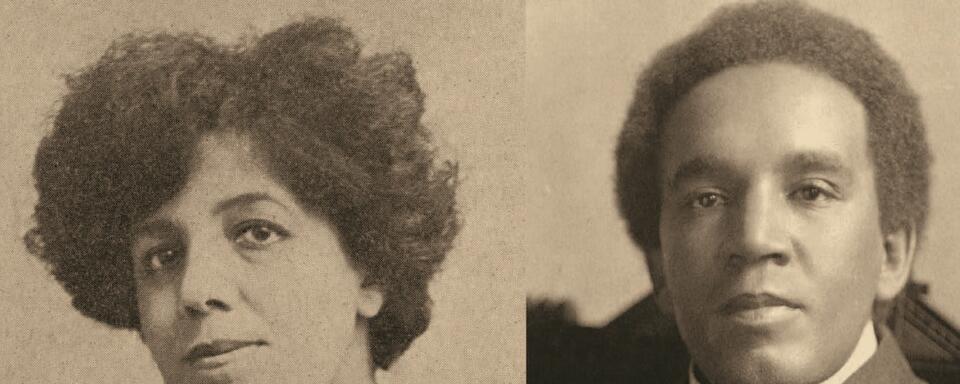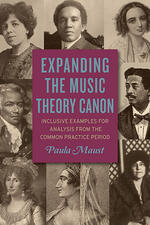
The Origins of Expanding the Music Theory Canon
Guest post by Paula Maust, author of Expanding the Music Theory Canon
When I taught my first Western classical music theory courses in 2016, I was disappointed by the absence of musical examples by historical women and/or people of color in textbooks and anthologies. I had naively assumed that educational resources would be more inclusive than they were when I was an undergraduate student in the early 2000s. After all, I knew that countless musicologists and theorists had spent decades producing a robust body of scholarship rooted in gender studies and critical race theory. Yet despite their valuable work, many of the foundational resources for teaching classical musicians had not been updated. In fact, the seven most-used music theory textbooks in the United States at the time contained 2930 musical examples, of which just 2.15% were by women and 1.67% were by people of color.
To counter this lack of representation, I began collecting musical examples by women and/or people of color active between c.1600 and 1900 to use in my courses. On each example I included a brief composer biography and spent a few minutes each day introducing these historical figures to my students. It was my goal to expand their idea of the canon and correct the historical narrative about who contributed to Western classical music’s development. During the next five years, I taught nearly every level of undergraduate music theory, keyboard skills, and aural skills at a major conservatory, a Research 1 university, and a regional state university with a liberal arts emphasis. With this high teaching volume, my collection of examples by composers from underrepresented groups quickly grew.
My colleagues’ responses to the work I was doing were mixed. Some genuinely believed the myth that women and/or people of color were simply not writing “good” music before the twentieth century. Others felt it was a waste of time to search for new teaching materials, because the examples we currently use have worked well for decades. A few colleagues were excited about my work, and I began sharing examples with them for their courses. Then in the midst of the devastation of the pandemic, the murder of George Floyd, and the desperate cries throughout the U.S. for equity and justice, I was compelled to channel my own angst into a constructive project. Inspired by the tremendous anti-racist pedagogical work of Philip Ewell, I published an open-source website with my musical examples. In the midst of so much turmoil, this felt like the one area where I might have the potential to bring about meaningful change.
When I publicly released my Expanding the Music Theory Canon website in January 2021, I had no idea how it would be received. I expected that either it would 1) be largely ignored, since I was a fairly unknown early career scholar, or 2) that perhaps I would have an inbox full of accusations that I was trying to cancel Beethoven (which has never been my intention). What I did not predict was that the site would be accessed by 10,000 users in fifty-four countries within twenty-four hours. Overwhelmingly positive responses poured in from university professors, private instructors, performers, conductors, and composers from around the world. I suddenly found myself giving talks at universities, negotiating a print anthology book contract with SUNY Press, working as an area editor for the Grove Music Online Women, Gender, and Sexuality Revision Project, and collaborating with Auralia & Musition to build a series of inclusive online worksheets. This all gives me tremendous hope that many are ready for significant change.
Classroom examples have the capacity to foster a sense of inclusion for students who might otherwise experience exclusion. Educational theorists have repeatedly demonstrated that greater representation of groups of people and points of view in textbooks tremendously influences students’ perspectives of themselves and the world. In March 2021, I conducted a study in which I asked the 106 participants to describe how they were impacted the first time they studied a piece of Western classical music by a woman and/or a person of color. Nearly every participant aged eighteen to thirty-five indicated that studying a piece by a historical composer who shared some underrepresented aspect of their identity was a critical, career defining moment. One person shared, for example, that “It made me feel included in a world of old dead men.” Another said: “It was a very significant experience, because as an African-American child I was always questioning whether playing classical music was something I “should” be doing.”[1]
My Expanding the Music Theory Canon anthology is the first print resource of its kind, which is very exciting! I invite you to explore the 255 musical examples composed by sixty-seven historical women and/or people of color and to delve into their fascinating biographies. There are many compelling reasons for broadening the palette of composers represented in the classroom, and this book provides a clear path forward.
Paula Maust is Assistant Professor of Music Theory at the Peabody Institute of the Johns Hopkins University.
[1] Paula Maust, “Racism and Sexism Remain Pervasis in Western Classical Music Instruction,” Journal of the International Alliance for Women in Music 27 no. 1 (Spring 2021): 21–23.


